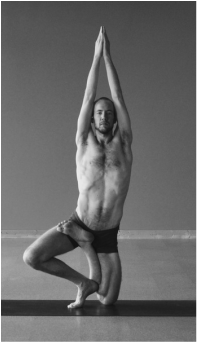|
As I study old yoga texts, I am struck by the numerous teachings of philosophy and mental control amidst a near-complete lack of references to the physical body. Yoga took a turn for the physical about 500 years ago with the Hathapradipika which describes the forceful physical practices of Hatha Yoga. But even it describes all of its practices as preparation for the Concentration, Meditation and Contemplation of Raja Yoga.
As a child of the 20th century, I first learned yoga as a physical practice. One that heals the body and unifies the body, breath and mind. The more I learn about yoga tradition and history, I realize that the current iteration of yoga as mindful exercise is a recent development, about 100 years old. It continues its shift toward physical fitness, becoming more athletic and less mental with each passing day. I wonder how we came to this place. How did yoga, a philosophical and mental discipline, turn into a practice of sweating, backbending, handstanding and physical health? I came across a revealing tidbit this morning: "Whereas Vivekananda and Aurobindo [circa 1900] addressed the intellectuals and propagated a spiritual and metaphysical yoga, Kuvalyananda and Yogendra made it available to the 'man in the world', and sought to use it for health improvement. 'Yogendra and Kuvalyananda transformed the practice of yoga into a physiologically based form of physical education and attempted to turn it into a scientifically verifiable form of therapy.' This change in orientation is...the defining moment in the emergence of modern yoga. For the first time, the physical, worldly and health-promoting aspects of yoga were given priority over the mental, spiritual and liberation-promoting ones. The proliferation of modern forms of yoga, many developed by Westerners, can be seen to be rooted in this fundamental shift. Moreover, it would be fair to say that in the West and, indeed, in much of modern India, a yoga class is generally understood to be concerned with physical movement, stretching and breathing first and with meditation, philosophy and spirituality only second." -from A Student's Guide to the History and Philosophy of Yoga, by Peter Connolly
0 Comments
Leave a Reply. |
This journal honors my ongoing experience with the practice, study and teaching of yoga.
My FavoritesPopular Posts1) Sridaiva Yoga: Good Intention But Imbalanced
2) Understanding Chair Posture 2) Why I Don't Use Sanskrit or Say Namaste 3) The Meaningless Drudgery of Physical Yoga 5) Beyond Bikram: Why This Is a Great Time For Ghosh Yoga Categories
All
Archives
November 2017
|


 RSS Feed
RSS Feed